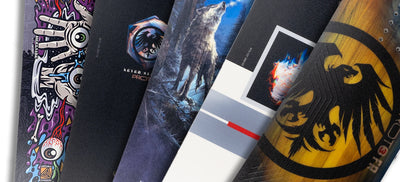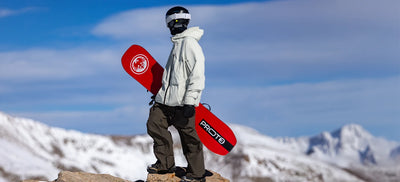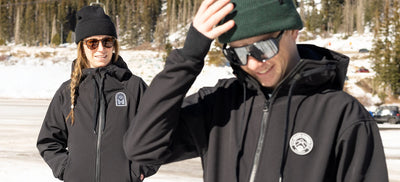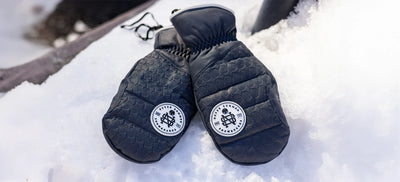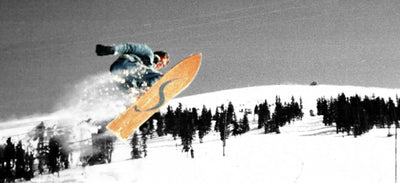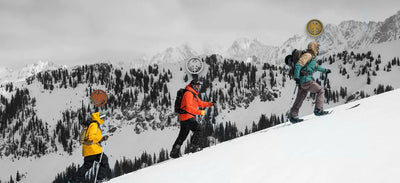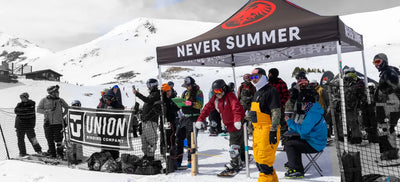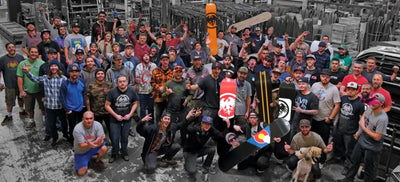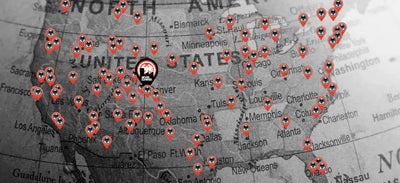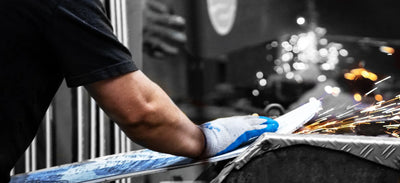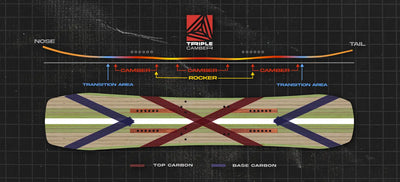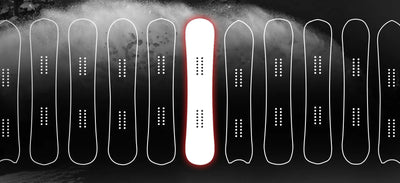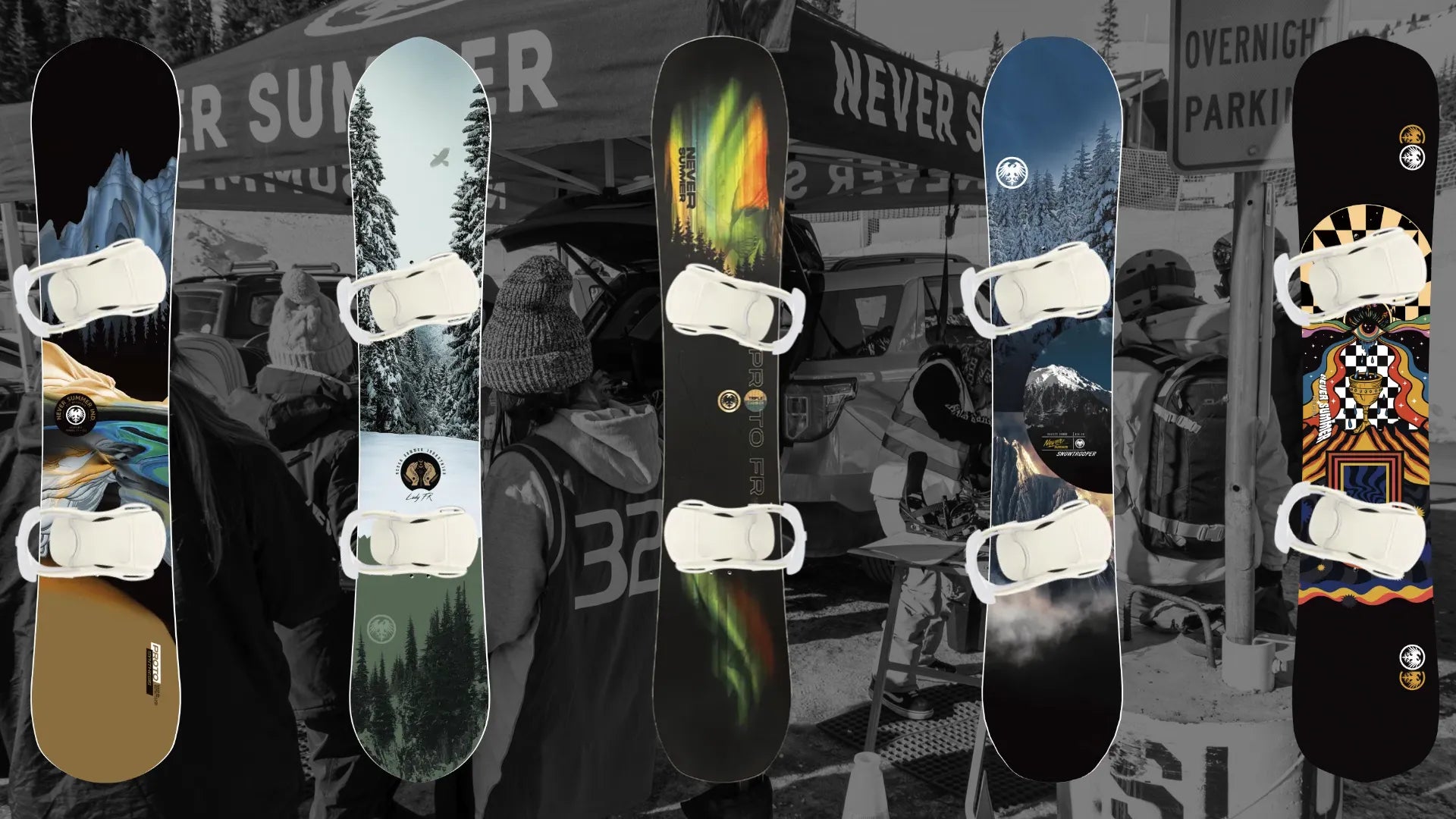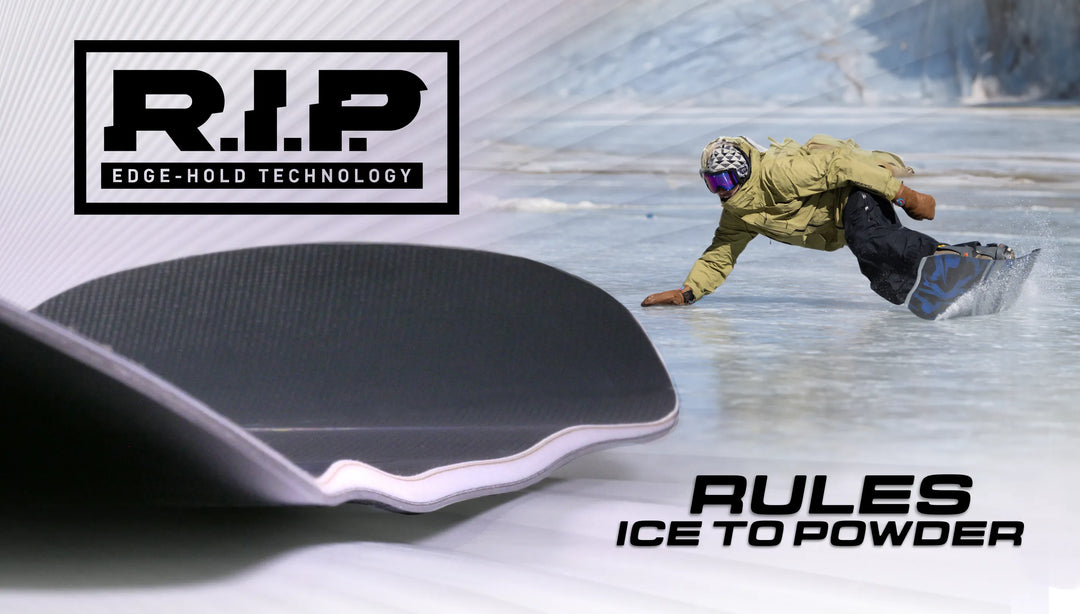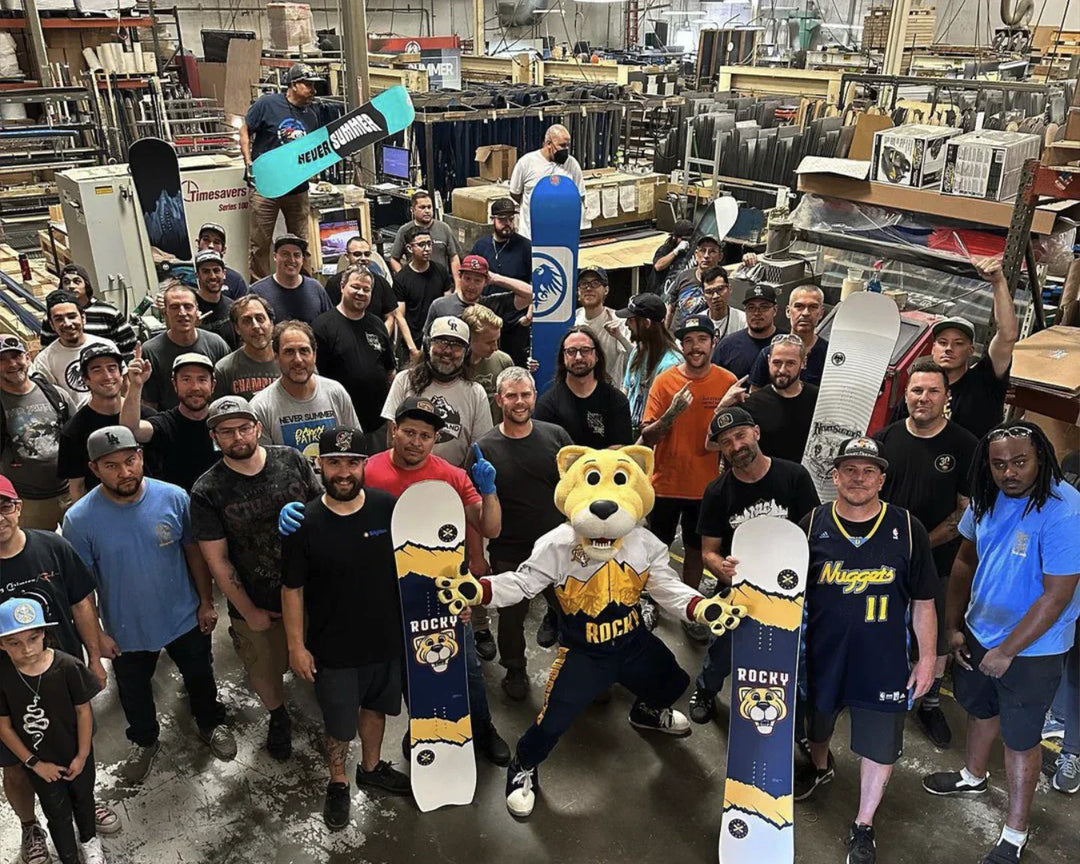The season is upon us, are you ready to hit the mountain? Whether you're a beginner or a well-versed snowboarder, understanding how to set up your snowboard stance and the differences you can customize is crucial. In this comprehensive guide, we'll explore everything from choosing between a regular or goofy stance to fine-tuning your binding angles for the perfect ride. Your stance can vary based on what snowboard bindings you have, what snowboard you’re riding, the snow conditions, and your personal preferences.
Snowboarding takes physical activity further than just a sport; it's an art form that merges your own personal expression on the hill with technical skill. At the heart of this art is your snowboard stance - the foundation of all your mountain adventures. But what exactly makes for your ideal stance?
Regular or Goofy: Identifying Your Stance
Regular (Left Foot Forward)
Goofy (Right Foot Forward)
The first step in setting up your snowboard stance is determining whether you're regular (left foot forward) or goofy (right foot forward). Your front foot is the foot that gives you balance and drives the direction of your snowboard, your front foot is usually your “less dominant foot”. Your back foot is usually your dominant foot (the foot you would use to catch yourself if you fell forward or what you would use to kick a ball) your back foot is what provides the power and slashability to your stance. Finding out if you’re goofy or regular can be based on determining your more dominant foot, but you’ll really be able to know once you get your first turns on snow.
The Importance of Stance Width/Placement
The width of your stance comes down to personal preference. A lot of different riders have different ideas as to if having a wide stance or narrow stance is better for different types of riding. A slightly wider stance can offer more stability, while a narrower stance may provide better maneuverability. These theories aren’t consistent, so we can’t say which is best for sure. However, a great place to start your stance is just wider than shoulder width. This width will give you a good starting point that you can move in and out from there. The key is finding a width that suits your riding style and comfort.
Placement is also very important. If you’re unsure on the mounting location or inserts you should use, here is a resource to our reference stance and other info. It's a good place to start as our reference stance is not too narrow to be unstable but not too wide to be harder on your knees and unable to drive your back knee inward for carving.
How To Setup a Snowboard
For setting up a twin for a centered stance, it’s important to be consistent with the front and back inserts. This will provide an equal nose and tail for more balanced, freestyle riding. However, even a twin snowboard can be set back for more directional or powder/slush performance. Our Shapeshifter 
even comes with a “blower stance” extra inserts to set the stance way back for those super, deep powder days.
Check Out The ShapeshifterIn contrast a highly directional board like the Valhalla

Some of our team likes to set their stance to the forward most inserts on the Valhalla. To take up some of the longer nose, not be so far in the backseat and to have more weight over the nose for driving the board in a more aggressive style.
Centering your binding to boot size
This can be done a few different ways, depending on the binding. Either with the slots in the disc or on some bindings will have an adjustable heel cup. You don’t want your boot hanging too far over the toes or too far back over the heeledge. The center of the boot should be centered over the board. For a smaller boot the slots or heel cup can be adjusted forward or for a larger boot size they can be adjusted back. Some boot sizes are proportional to the board width and discs can be mounted in the center of slots or run vertically to get additional width adjustment.
Adjusting Forward Lean

Forward lean is an adjustment of the binding highback angle. Adjusting the lean toward your calf or forward will engage the heelside edge for quicker response. Having your highback with less lean minimizes the response for a more “surfy” or looser feel and for some reduces that pressure on your calf. We recommend trying different settings to find what works best for you..
Adjusting Your Binding Angles
Your binding angles play a significant role in snowboard riding. It determines how your feet are positioned on the board and can impact everything from turning to executing tricks.
Being able to read your binding angles properly on your binding discs is key here and will help you better understand setting up your bindings. When looking at the disc for your binding, you will see small notches that signify your binding angle. These notches will either be directly on the disc or on the actual base plate of the binding. Each of these notches signifies 3 degrees of angle. So if you are inline with where zero is, five notches over will be 15 degrees of angle. When talking about positive and negative angles, it is based on the angle towards the nose, if you adjust your binding angle to point your toes more toward the nose of your board, that is a positive angle. Same with vise-versa, if you point your toes away from the nose of your board, that is a negative angle. (In the image below, we have a regular rider's front binding with the angle set to +12 degrees)

Most riders prefer their front foot pointing at the nose of their snowboard giving them a positive angle (usually between 9 - 21 degrees) with their front foot. Having this front binding angled towards the nose helps you drive your front foot pressure into a turn. It also makes it easier to “skate’’ in a liftline and positions your body more downhill.
Riders for the most part all find it better to ride with their front foot angled towards their nose, however there are a few different ways that you can angle your back foot to complement your riding style or personal preference.
The Positive Negative Stance (AKA Duck Stance)

Duck stance, where both feet point outward at an angle (a positive angle on your front binding and a negative angle on your back binding), is popular among freestyle riders. It's great for riding switch (in the opposite direction) and offers a comfortable, versatile position. It also helps to reduce boot overhang.
The Positive, Positive Stance (AKA Alpine Stance)

This is when both of your binding angles are pointed towards the nose of your snowboard. Most riders that ride with a positive stance on both feet will have a higher angle (+12 or more degrees) on their front foot, and a lesser positive angle on their back foot (+3 or more degrees) A positive, positive stance is awesome for laying down deep carves on your toeside and allows for more aggressive heelside turn. It also reduces drag, positions your shoulders more down the fall line of the mountain and naturally tucks your back leg inward to center a rider's weight, bends knees and allows a rider to really drive or push their weight into a turn. Switch riding can be a challenge with a positive, positive stance, so it is best on a directional board from us.
The Positive, Zero Stance (AKA Old School)

This stance is when you have a positive angle on your front foot, but a zero degree angle on your back foot. This stance is great for someone looking to ride regular most of the day, but like to occasionally go switch without putting strain on your knees. This a comfortable stance that has worked for a wide array of riders for years and is perfect for beginners or someone looking to transition from a duck stance to a posi, posi stance.
The Role of Personal Preference
Personal preference is the backbone of your snowboard setup. While guidelines exist, the best stance is one that feels natural and comfortable for you. After some time of experimenting and dialing in your stance, you will learn your personal preferences. Some people even have personal preferences for each type of terrain they are riding on a specific board or day.
Ideal Stance for Different Riding Styles
The ideal stance varies depending on whether you're into freestyle, freeride, or alpine snowboarding. Understanding the demands of each style is key to optimizing your stance. As you learn more about your personal preferences, you’ll be able to dial on your stance best for your own riding style.
Tips for Adjusting to a Wider or Narrower Stance
Adapting to a wider or narrower stance can take time. It's important to make gradual adjustments and test what works best for you.
Conclusion: Perfecting Your Stance
Your snowboard stance is as unique as you are. By understanding the basics and listening to your body, you can create a setup that enhances your riding experience.
FAQs
- How do I know if I'm regular or goofy?
Your front foot is usually your “less dominant foot”. Your back foot is usually your dominant foot (the foot you would use to catch yourself if you fell forward or what you would use to kick a ball) Pushing onto a skateboard, its usually pretty apparent on what is your leading foot.
- Does a wider stance help with stability?
Yes, a slightly wider stance can improve stability, especially in freestyle riding.
- What is a duck stance?
Duck stance is when both feet point outward, offering versatility and ease in riding switch.
- How important are binding angles?
Binding angles are crucial as they dictate your foot position and affect your control and comfort on the board.
- Can I change my stance over time?
Absolutely! Your stance may evolve as you gain experience and try different styles of riding.


